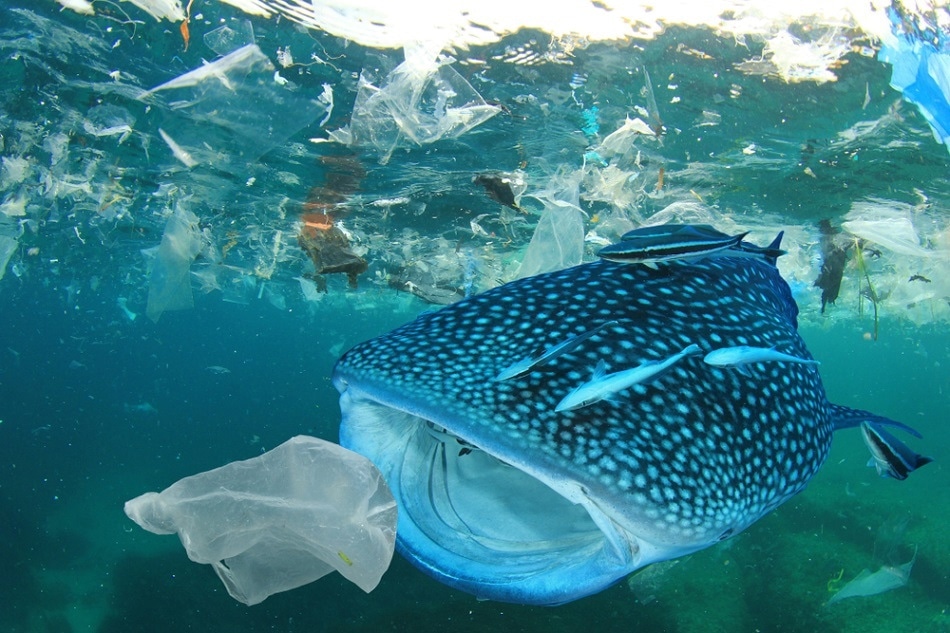
Rich Carey / Shutterstock
Plastics are ubiquitous – we use them for a variety of applications every day and many are simply discarded after a single use. Plastics don’t biodegrade very quickly and present a huge ecological and environmental problem. Nearly every pound of plastic we have ever produced is still in the environment – in oceans, on the streets and in landfill. And this will only continue to grow as more plastics are produced.
But this can’t continue; we need to change the types of plastic we use and how we use them. We need to do better at reclaiming, reusing and recycling the plastics we already have instead of producing more. There are two types of recycling:
- Post-process – utilizing plastic waste at plastic molding factories
- Post-consumer – new plastics are made from discarded plastic waste that has been used, cleaned and reprocessed.
Post-consumer recycled plastics are derived from end products, such as water bottles, that have completed their lifecycle as a consumer item and could be reused rather than being disposed of. Plastics made from post-consumer materials keeps waste away from landfill and directs it towards recycling plants, thus reducing plastic waste. Using post-consumer plastics makes sense – its competitive cost-wise, materials are available, and it has a positive impact on the environment.
PET
Polyethylene terephthalate (PET) is by far the most popular packaging material because it is durable and affordable. It is used in fibres for clothing, liquid and food containers, thermoforming for manufacturing, and in combination with glass fibre for engineering resins.
In 2016, it was estimated that 56 million tonnes of PET are produced, most of which is used for plastic bottles and can easily be recycled. Spent plastic is collected at local recycling plants, sorted, sterilised and repurposed into new packaging.
Environmental benefits
Carbon footprint:
Consumers and companies are becoming increasingly aware of their carbon footprint, that is the amount of carbon dioxide released into the atmosphere as a result of their activities. Post-consumer plastics allow manufacturers to reduce their carbon footprint.
The carbon footprint of producing 100% post-consumer PET is 60% lower than manufacturing virgin PET – and this includes the energy required to collect, recycle, and remanufacture the plastics. The resulting product is high quality, and allows for high levels of post-consumer plastics to be used effectively.
Raw materials:
Post-consumer plastics eliminate the use of virgin plastics, which is especially important as recycling rates are decreasing. Virgin plastics are manufactured from petroleum, a fossil fuel which is decreasing in availability. As it becomes scarcer, the cost of raw materials will increase, which will increase the price of plastics.
At the same time, the cost of post-consumer materials will remain the same – there will be little change in the price of collecting, washing, sorting and processing plastics for recycling. Furthermore, when consumers recycle, supply and demand dictate that post-consumer plastics will become very attractive compared to virgin resins.
Microplastics:
Microplastics are small pieces of plastic ranging from 5mm to 100nm which have entered the environment via dumping or degradation. They find their way into the oceans, seas and waterways where they can be ingested by marine life and accumulate up the food chain. Recycling and reusing plastics can reduce the amount of microplastics in the environment.
Consumer power – the financial benefits
Many demographics prefer to deal with green and sustainable businesses, and research has suggested that consumers are willing to pay more for products made with post-consumer plastics. So, using post-consumer plastics provides an opportunity for companies looking for more sustainable packaging options for their environmentally-conscious customer base.
It’s been suggested that there isn’t enough post-consumer plastic to meet demand, but if the customer wants it and is willing to buy post-consumer plastics, the market can be created.
Conclusion
The benefits of using post-consumer plastics are numerous; not only do they reduce the amount of plastics going to landfill or making their way into the environment where they can cause serious issues, they can help companies reduce their carbon footprint and eliminate the need to use fossil fuels as a raw material. Furthermore, post-consumer plastics provide an opportunity for companies to become more ecologically sustainable, and allows consumers to make environmentally-conscious decisions.
Further reading
Post Consumer Recycled Plastic
Post-Consumer Recycled Plastic (PCR) Is the Answer
What Is PCR and Why Should You Consider Using It for Your Packaging?
The Benefits of Using Post-Consumer Plastics
Disclaimer: The views expressed here are those of the author expressed in their private capacity and do not necessarily represent the views of AZoM.com Limited T/A AZoNetwork the owner and operator of this website. This disclaimer forms part of the Terms and conditions of use of this website.